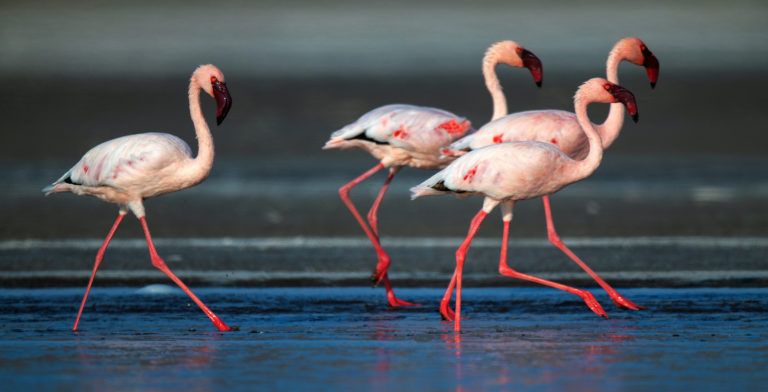

Lesser Flamingos on Lake NatronĮast Africa has between 1.5 – 2.5 million Lesser Flamingoes representing three quarters of the world population. Most of the East African Lesser flamingos are hatched at Lake Natron there are plenty food and secure nesting sites because the area is isolated and undisturbed. The colour of Lake Natron is characteristic of lakes in which evaporation rate is high and where organisms that thrive in areas with high salinity levels live. In Lake Natron high evaporation rates and salinity of the water have influenced halophytic life in the lake. Photosynthetic Cynobacterias that make their own food from the red pigment are the reason for the reddish and orange colour in waters of this lake. The red photosysnthetic accessory in Cynobacterias produces the deep red of the open waters and orange of the shallow waters. Most animals find high temperatures which rise to 60☌ and salinity that can go as high as the pH 12 to be inhospitable. But, some endemic algae, invertebrates, fishes and birds find the lake to be a good home. Two endemic fish species, the alkaline tilapias, Alcolapia latilabris and Alcolabria ndalalani thrive in the less salty waters on the margins of Lake Natron. The scenery around Lake Natron is what attracts visitors to the region.Īlcolapia alacalica is also found in Lake Natron but not endemic to the lake. The dramatic landscape is dotted with tanzania’s most recognizable landmarks such as Ol Doinyo Lengai and Gelai volcanoes.


To the west is the site where a perfectly preserved huminid jaw and teeth, known as “Peninj Mandible”, was found. Visiting Lake Natron allows you to do walking safaris, flamingo walks, volcano climbing and cultural tours.The Copernicus Sentinel-2 mission takes us over two saline lakes in East Africa: the larger Lake Natron in northern Tanzania and the smaller Lake Magadi, just over the border in Kenya. Lake Natron is around 60 km long and is fed mainly by the Ewaso Ng'iro River. Despite its dark colour in this image, Lake Natron is often bright red owing to the presence of microorganisms that feed on the salts of the water. The saline waters make the lake inhospitable for many plants and animals, yet the surrounding salt water marshes are a surprising habitat for flamingos. In fact, the lake is home to the highest concentrations of lesser and greater flamingos in East Africa, where they feed on spirulina – a green algae with red pigments. The extinct Gelai Volcano, standing at 2942 m tall, is visible southeast of the lake. The pink-coloured waters of Lake Magadi can also be seen at the top of the image. The lake is over 30 km long and has a notably high salt content, and in some places the salt is up to 40 metres thick. The mineral trona can also be found in the lake’s waters. This image, which was captured on 3 February 2019, is also featured on the Earth from Space video programme.Ĭredits: contains modified Copernicus Sentinel data (2019), processed by ESA, CC BY-SA 3.This mineral is collected and used for glass manufacturing, fabric dyeing and paper production.Ĭopernicus Sentinel-2 is a two-satellite mission to supply the coverage and data delivery needed for Europe’s Copernicus programme. The mission’s frequent revisits over the same area and high spatial resolution allow changes in inland water bodies to be closely monitored. This mineral is collected and used for glass manufacturing, fabric dyeing and paper production.Ĭopernicus Sentinel-2 is a two-satellite mission to supply the coverage and data delivery needed for Europe’s Copernicus programme.

The Copernicus Sentinel-2 mission takes us over two saline lakes in East Africa: the larger Lake Natron in northern Tanzania and the smaller Lake Magadi, just over the border in Kenya.


 0 kommentar(er)
0 kommentar(er)
